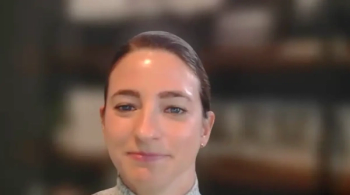
Should Taking the PCOA Be a Prerequisite for Clinical Rotations?
Meant as a curricular assessment, this test could hurt colleges and students unexpectedly
Michael Berger, wrote “How the PCOA Benefits Pharmacy Students,” outlining the student benefits of the Pharmacy Curriculum Outcomes Assessment (PCOA). The exam is meant to be a way for colleges to assess their curricular success under Accreditation Council for Pharmacy Education Standards 2016. However, the practical implications of the exam could be disastrous for low-performing colleges of pharmacy.
There are at least 4 ways the PCOA could harm a pharmacy school. These are:
1. Reducing residency acceptance rates: In a
2. Delaying graduations: It seems clear that some students did not take the PCOA seriously. The
3. Pushing away bad test-takers: Some very good students fear standardized exams, and this anxiety often leads to poor testing performance. There is a button on the PharmCAS directory that allows students to sort by schools that require the (Pharmacy College Admission Test) PCAT and those that do not. Currently, 26 schools of pharmacy do not require the PCAT, which may get a student past the admissions exam, but with the PCOA later in the curriculum, some schools may have admitted a disproportionate number of students who struggle with test anxiety.
4. Inviting pushback from APPE sites: Let’s assume that there are more than 14,000 students on APPE rotations at any given time. This is the number graduating annually from pharmacy schools. The percentile comparisons that the PCOAs offer to individual students could backfire; 1,400 students each year will go into APPE rotations as the bottom 10% nationally. This is a mathematical certainty. Prior to the PCOA, there was no quantitative way to compare students. Now, however, an APPE site could put threshold limits on which they take. Also, an APPE site could ask students for their scores to determine where they stand to adjust their own curriculum. With percentile scores, 7,000 would present scores in the bottom 50%. But, is it fair or safe for a student or the site to have someone in the bottom 10% working in critical-care or high-level clinical rotations?
The PCOA testing window may also set up a nightmare for experiential offices that have placed students, only to find that they are not permitted to continue into those rotations. Although pharmacy schools may self impose thresholds for students to move on to the fourth year, this could also backfire as students may simply drop from pharmacy school altogether, pushing the 11% 5-year attrition rate even higher.
In his article, Dr. Berger wrote that “[t]he PCOA seems to have benefits that extend beyond the purpose of a curriculum assessment, as its results could potentially help pharmacy students secure jobs or residency positions.” The converse is also true; the refusal of a student to disclose his or her PCOA scores would raise a red flag and make for a very uncomfortable fourth professional year.
In my APPE rotation, I wouldn’t want to know a student’s PCOA score at all. I would want to judge them on the work they do, rather than a score they earned. With so much possibly riding on the PCOA, I would turn to TLDRPharmacy.com for one of their
Newsletter
Stay informed on drug updates, treatment guidelines, and pharmacy practice trends—subscribe to Pharmacy Times for weekly clinical insights.


















































































































































































































